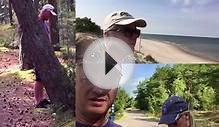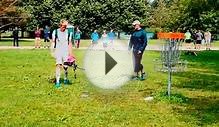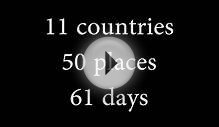
Discover the many facets of the Baltic States and see six World Heritage sites, including the imperial riches of St. Petersburg, on our six-country Baltic Sea program. You’ll also gain insight from Lech Walesa, former president of Poland and Solidarity leader, and guest speaker Sergei Khrushchev, author, scholar, and son of former Soviet Premier Nikita Khrushchev.
Highlights Include:
- “White Nights of Summer”: Beginning in Cophenhagen, cruise for eight nights in Scandinavia during near-constant daylight.
- Visby: Walk through the well-preserved walled city and World Heritage site of Sweden’s Visby, evocative of the Viking Era.
- Gdansk and Tallinn: Explore the cultural renaissance of Poland’s Gdansk and revel in the medieval charms of Estonia’s Tallinn.
- St. Petersburg: Spend two special days exploring the treasures of Russia’s St. Petersburg, including the Hermitage Museum and the palaces of Pushkin and Peterhof.
- Helsinki: Discover Finland’s stunning architecture and modern design aesthetic.
- Stockholm: End your cruise in Sweden’s capital.
Itinerary
Days 1 & 2 — Depart the U.S., Arrive Copenhagen, Denmark
Upon arrival in Copenhagen, embark the deluxe Le Boréal and set sail. (D)
Day 3 — Visby, Gotland Island, Sweden
Call at the Baltic island of Gotland, one of Sweden’s richest historical regions with more than 100 medieval churches. The marvelous Old Town of Visby, the Baltic hub of the Hanseatic League, is a World Heritage Site and arguably the best preserved medieval city in Scandinavia. See the 13th-century walls; the original medieval gates, towers and stone warehouses; the iconic Cathedral of St. Mary (the only one of Visby’s Gothic churches not in ruins today); and the small but spectacular botanical gardens that have drawn garden enthusiasts to this “city of roses” since 1855. This evening, gather for the captain's festive welcome reception and dinner. (B, L, R, D)
Day 4 — Gdansk, Poland, Special Guest Speaker Lech Walesa
The historic city of Gdansk features several examples of Poland’s finest medieval and Renaissance architecture. Walk past elegant patrician mansions featuring late Renaissance and Baroque façades in the Old Town and see the famous Neptune’s Fountain. Visit the 14th-century Artus Court, a meticulously restored Gothic guildhall that houses a fascinating collection of Polish art.
In 1980, workers led by Lech Walesa founded the Solidarity movement, the first independent trade union in Eastern Europe and the key factor in winning the Polish struggle against Communism. See the historic Lenin Shipyard and its Monument to the Fallen Shipyard Workers. By special arrangement, meet the leader of the Solidarity movement, former President of Poland and Nobel Peace Prize winner Lech Walesa on board the ship this afternoon. Mr. Walesa will discuss his perspective on Solidarity, globalization, and progress in the region with time for questions and answers. (B, L, D)
Day 5 — Cruising the Baltic Sea
Cruise the Baltic Sea and enjoy a series of enriching lectures. (B, L, D)
Day 6 — Tallinn, Estonia
Having largely escaped the ravages of World War II, Tallinn’s Old Town, now a World Heritage site, has remained virtually unchanged for the past 600 years. During the walking tour, see Toompea Castle, the landmark Alexander Nevsky Cathedral, and the 13th-century Church of St. Nicholas. Visit the medieval Town Hall, the only intact Gothic-style hall in Northern Europe. (B, L, D)
Day 7 — St. Petersburg, Russia
Peter the Great founded the majestic city of St. Petersburg in 1703 as his “Window on the West.” Explore the city’s historic center, a World Heritage site whose legendary landmarks are scattered across more than 100 islands linked by more than three times as many bridges. St. Petersburg’s main thoroughfare, Nevsky Prospekt, showcases exquisite examples of Russian Baroque and neoclassical architecture. See the beautiful Church of Our Savior on Spilled Blood (Church of the Resurrection of Christ), built on the site of Emperor Alexander II’s assassination, and the 19th-century St. Isaac’s Cathedral, with a striking golden dome that is one of the glories of the city’s skyline. Visit St. Petersburg’s first building, the Peter and Paul Fortress, constructed to secure the country’s access to the sea. See the impressive Baroque Cathedral of Sts. Peter and Paul, containing the tombs of 32 czars, from Peter the Great to Nicholas II, the last of the Romanovs.
Later, see one of the world's greatest art repositories at the incomparable State Hermitage Museum, former palace of Catherine the Great and a World Heritage site. The spectuacular collections are rivaled only by the museum's lavish interior.
The evening is at leisure. Attend an optional Russian folklore show performed in the Nikolaevsky Art Centre. (B, L, D)
Day 8 — St. Petersburg
Visit the imperial compound of Pushkin and Catherine the Great’s elaborate rococo palace, a World Heritage site, highlighted by a special visit to the extraordinary Amber Room. Then enjoy a lunch of traditional Russian specialties.
This afternoon, visit the extravagant parklands and Grand Palace of Peterhof, a World Heritage site, commissioned by Peter the Great to rival Versailles. The elaborately landscaped grounds feature formal gardens and cascading fountains. Return to St. Petersburg by hydrofoil, skimming over the Gulf of Finland. (B, L, D)
See also:RELATED VIDEO












